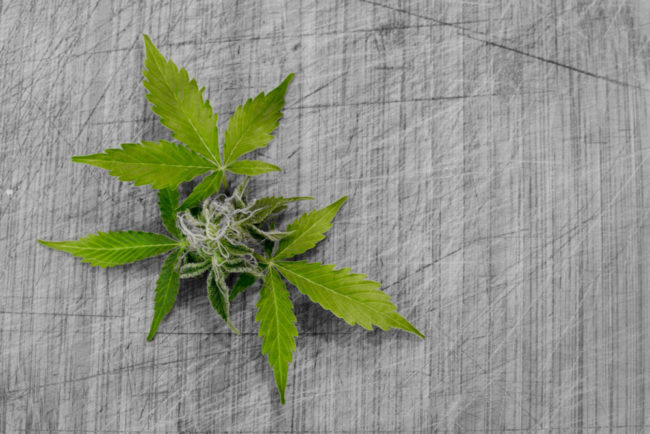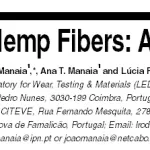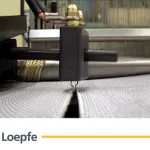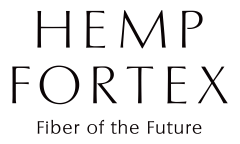
Hemp has a long history in India as well as in the western world.
Hemp (cannabis sativa) and marijuana (cannabis indica) are two very different species of the cannabis plant. They are not the same and hemp does not get you high. This, of course, comes with a don’t-try-it-at-home warning.
The obstacle in the way of Flex’s growth is the psychoactive THC (Tetrahyrdrocannabinol) – that gets users high. It is usually 3% or higher in marijuana and under 0.3% in hemp. Which means hemp generally isn’t psychoactive.
The key features of Hemp are:
- Requires just 40% of the ecological footprint and 20% water as compared to cotton, as per a Stockholm Environment Institute study
- Produces the strongest, most durable natural fibre on earth
- High in essential fatty acids and amino acids (its seeds can be consumed)
- Hemp paper has the potential to reduce deforestation as an acre of hemp will produce as much pulp for paper as 4 acres of trees over a 20 year period
- Top producer of biomass per acre in the world
Hemp has a long history in India as well as in the western world. Its use as food, fuel, fibre and medicine has been well documented. In fact, the oldest relic ever found that traces back to 8000 BC was hemp fabric found in Mesopotamia (current day Turkey).
There is really not much to the story apart from hemp being incorrectly and unjustly clubbed with marijuana, by means of government regulations and drug paranoia. But the revival it is seeing is great and gives hope in some way of a breakthrough for the world at large.
What’s happening with hemp cultivation in India
While psychoactive cannabis is illegal in India, hemp can be grown by obtaining a license from the State government. After a long period of tentativeness regarding procedures for getting such a license, especially given the taboo surrounding it, Uttarakhand granted the first license for commercial cultivation of hemp earlier this year.
This must be a considered a landmark step that drives conversation forward on the hemp revolution.
Any mention of hemp in India wouldn’t be complete without talking about Bombay Hemp Company (Boheco), founded in 2013 founded by 7 college friends who set out to make some big changes.
They are actively involved with the Government and other stakeholders to standardise, commercialise and industrialise hemp cultivation in India by working towards building a seed bank.
Indian hemp startups
While the evolution of hemp policy with the Government takes its course, Boheco are getting more and more active in hemp clothing to get people used to the idea of having hemp as a part of their daily lives.
Boheco has a fashion brand called B Label that sells hemp clothing for men and women. They also have a vertical called the Hemp Fabric Lab that supplies fabrics to businesses that want to start using hemp to make different products.
There are more players in the space too. Namrata Hemp Co has plans similar to Boheco in hemp R&D, cultivation and sales. While B. E. Hemp makes hemp clothing and accessories including lamps, notebooks, wallets and cosmetics. Arture, that primarily does cork products, also uses hemp for some its accessories. Others like Hempster and HempCann have a range of cannabis based body care and medicinal products. Most raw materials are currently imported from overseas by these brands, with China and Italy being prominent suppliers.
Amish Behl, Founder, Definitely Curry
“For a crop that can do so much, it’s a pity we are deprived of it because of the marijuana taint. So this global hemp revival or revolution feels awesome. It shows that mindsets are changing and governments are coming around to it as well.”
(Courtesy: Amish Behl, Founder, Definitely Curry)
And the Winner is Hemp Fabric!
-
Hemp - History
-
Hemp - Benefits
-
Organic Cotton vs Hemp
-
Bamboo vs Hemp
-
Recycled Synthetics vs Hemp
-
Linen vs Hemp
Did you know, Hemp is the oldest known fiber and has been used for thousands and thousands of years. Did you know that first pair of jeans were made out of hemp? Or the fact that George Washington was a hemp farmer? Or the sails that brought everyone over from Europe were made from hemp? And finally, did you know that Betsy Ross made our United States flag using hemp? As you can see, there are many benefits of hemp fabric.
Hemp wins!
In 1942, when the United Sates went to war with Japan, the US Department of Agriculture needed farmers to switch their crops to hemp due to the shortage of raw materials like rope for the war. So, hemp is a fiber that has a rich national and global history.
Hemp fabric is naturally anti-bacterial, anti-microbial with anti-odor properties. Super comfortable, breathable and gets softer with every wash. Hemp is also eco-friendly and provides rich nutrients back to the soil.
Better Choice:
Hemp is a natural choice. Naturally durable, it partners well with cotton to make different fabric weights and construction, adding strength and durability when the two are blended. Another benefit of hemp fabric is that it’s a much better option than polyester/cotton blends because of its biodegradability. Polyester and hemp share similar wicking properties. But a North Carolina State University study revealed polyester degrades least among cotton, rayon, and blended fabrics, often ending up as microplastics in our air and water.
What makes hemp so great, it utilizes everything from the growing of the plant to the performance features of the plant. It uses little to no water to grow and needs no pesticides. Plus, it offers excellent ground cover or top canopy, while helping to prevent weeds from growing. One of the many health benefits of hemp is that it has the capacity to revitalize previously decimated soil by extracting harmful metals and toxins. Once hemp is processed into fiber, it gets even better. Hemp has natural performance features that we do not currently see on the market. It is durable, anti-static, anti-bacterial, biodegradable, and much more.

Hemp Infographic
Conventional cotton (aka chemical cotton) is one of the most destructive crops to cultivate. Pesticides seep into the ground and poison farmers and other workers each year. Our organic cotton does not use any harmful chemicals and is a much safer alternative for the planet, our farmers, and you. However, only the Global Organic Textile Standard (GOTS) which ensures that no harmful chemicals every touch the organic cotton during the manufacturing process. Hemp needs no pesticides or fertilizers to grow and uses about half the water needed to grow conventional cotton. Both hemp and organic cotton are biodegradable.
Winner = Hemp, organic cotton is a close second
First, bamboo fiber doesn’t exist! If you test any of your “bamboo” clothing in a lab, the lab test will not say it is bamboo but rather say it is rayon. This is why the Federal Trade Commission (FTC) requires companies to state. “Rayon from bamboo.”, which is in fact what the FTC requires. In fact, bamboo is the fastest growing plant in the world. It does not require any pesticides or chemicals to grow and uses much less water than cotton and is totally biodegradable. This means, the farming process of bamboo is highly sustainable which is why bamboo clothing still remains part of the sustainable fashion niche. The comfort and softness of bamboo fabric are also unmatched. However, the sustainability of bamboo stops at cultivation. After bamboo is cut down it needs to be processed into a yarn to be knitted into a fabric. In order to do so it must go through a toxic chemical process which is called viscose. This is where it all goes downhill and super-fast for bamboo. The viscose process is extremely chemically infused and the end result as we mentioned isn’t a bamboo fabric but rather rayon. This viscose process strips bamboo of all of its sustainability.
Winner = Hemp.
Synthetic materials such as polyester or nylon are very common throughout the world, however they are man-made fibers deriving from oil. This would probably make synthetic materials the least sustainable material. Once created, they are here to stay forever. To lessen the damage synthetics do it is a very good idea to reuse them and create clothing from recycled polyester or recycled nylon, etc. This of course, lessens the damage synthetics due to our environment but it doesn’t take away from the fact that they are still made from oil and will never biodegrade.
Winner = Hemp
If there was one material that comes close to the sustainability of hemp, that would be linen. Linen is a natural fiber which stems from the flax plant. Many times, linen can be mistaken for hemp as it has a lot of the same features and both come from the family of bast fibers. Linen comes with many of the sustainable benefits that hemp does and are very comparable. However, where they differentiate is in the agriculture arena. Hemp has a fiber yield that is sometimes double that of which linen can produce. Hemp is also better for the soil and is sometimes grown the year prior to a flax crop like linen to keep the land free of weeds and in good condition. Hemp can also be grown in any season and always be replenishing the soil.
Winner = Hemp






